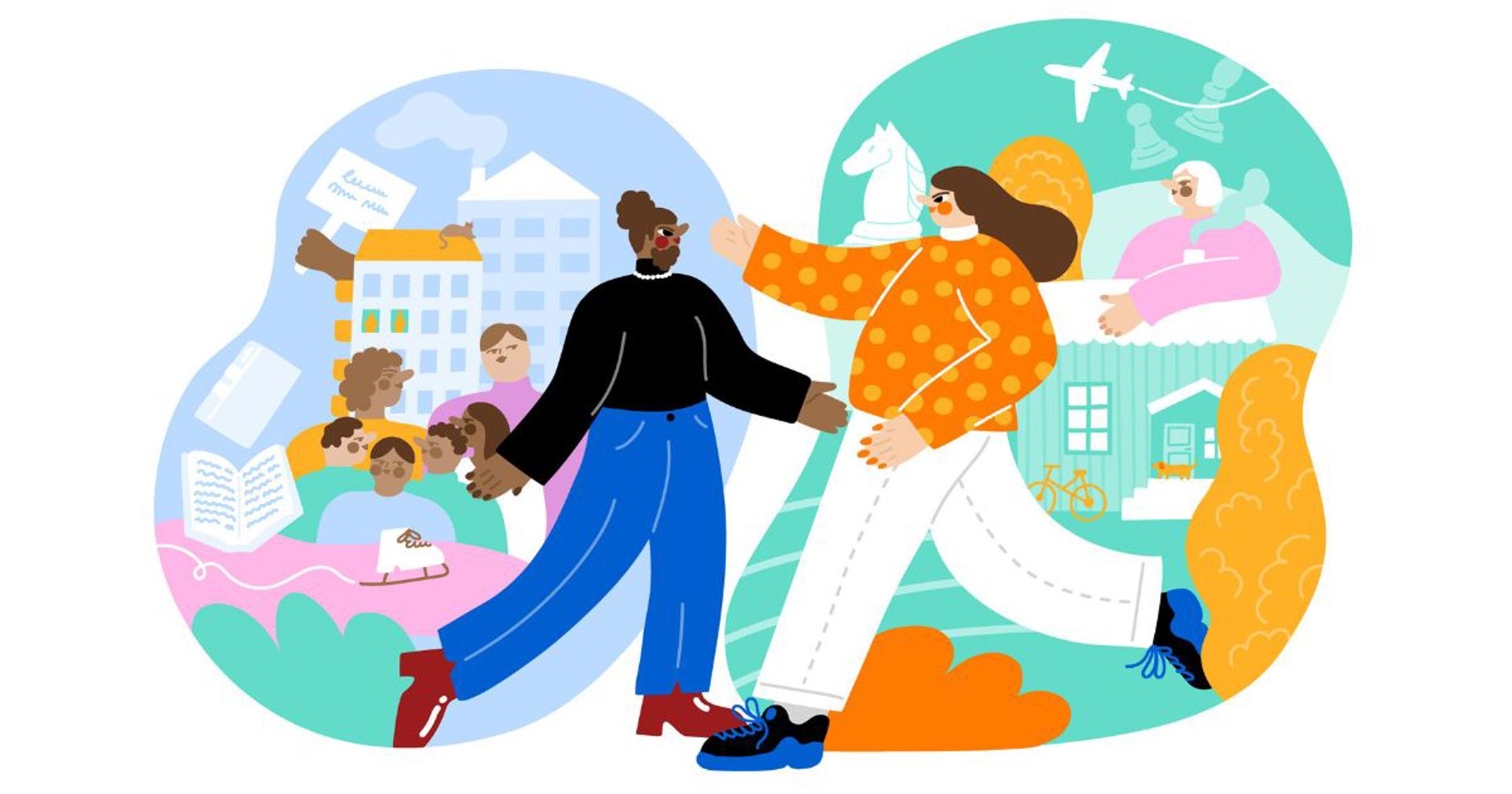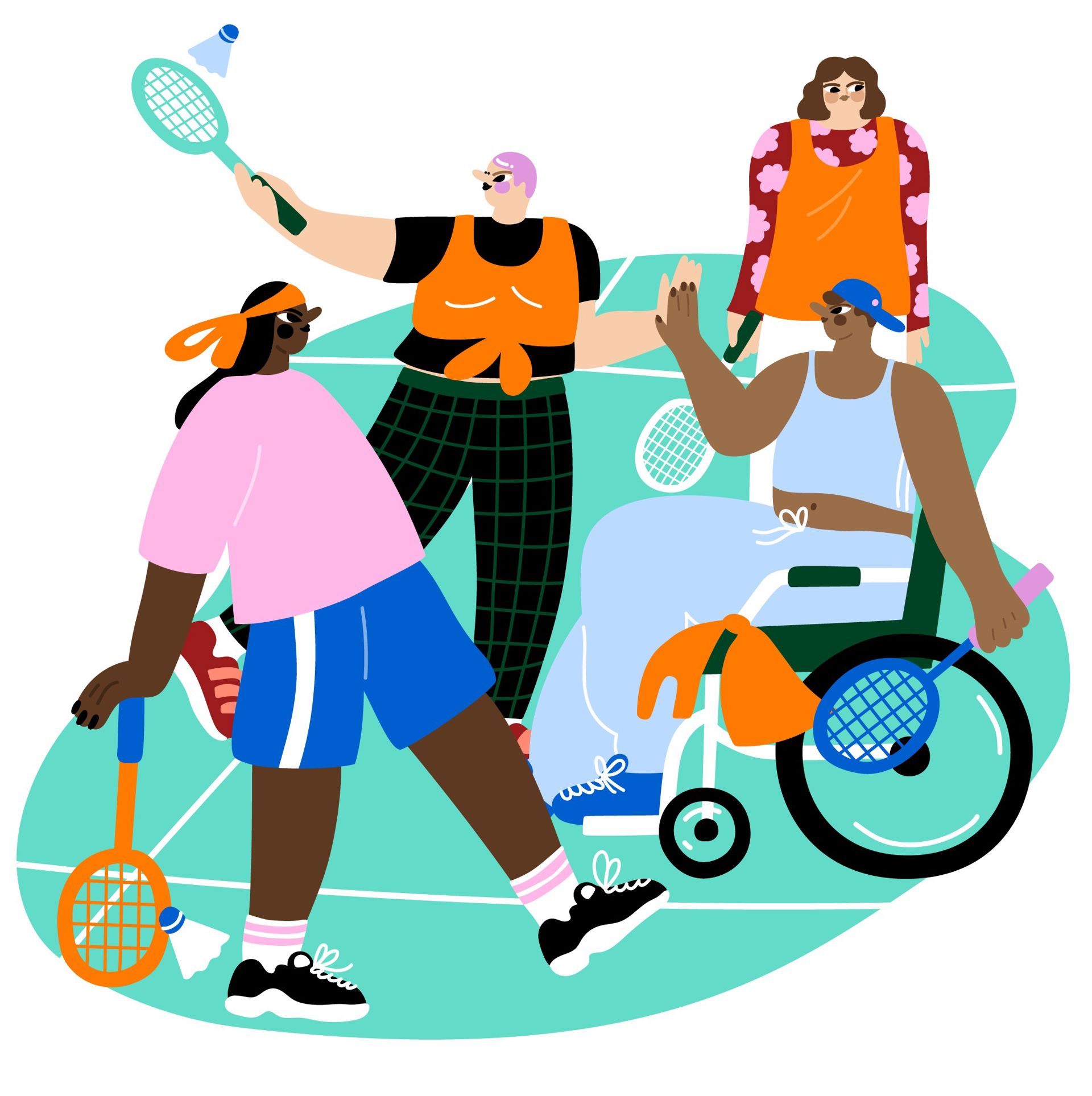Equity and Equality at Youth Shelters

The Red Cross Youth Shelters are a place of non-discrimination for everyone. Here, you can find information about our objectives and work towards equity and equality.
Youth shelters have been supporting young people and families in need of help for over three decades. In that time, the lives of young people and their families, society and the daily routines at the youth shelters have become increasingly diverse.
At the same time, young people’s right to have a good life and receive care is not honoured equally; instead, the gap between individuals’ resources and ability to have an influence is widening worryingly.
The youth shelters’ equity and equality plan has been created as a response to these changes and the needs that they have brought on. Youth shelters want to promote equity and equality. We are committed to keeping all the youth shelters non-discriminatory for everyone.
The equity and equality plan has been created together by a working group and the entire staff of the youth shelters. The seven principles that steer the work of the Red Cross also serve as the plan’s foundation.
Young people’s thoughts and wishes regarding equality and non-discrimination were collected in the Digiraati (in Finnish) discussions held in spring 2021. Their message was clear: a non-discrimination approach must be seen and heard.
The equity and equality plan is intended for everyone taking part in the Youth shelter activities. This includes young people, their loved ones, the employees, volunteers and partners.
- Young people and their loved ones are always welcome to the youth shelters. We encourage them to promote equality through their actions and report any discrimination they may experience.
- The staff at the shelters are responsible for ensuring that the youth shelters serve as a community that respects human rights and equality.
- We expect the volunteers to commit to the Red Cross’s principles and operational values, as well as the promotion of equity and equality.
- We also expect our partners to commit to promoting equity and equality.
The equality work carried out by the Youth shelters is based on four principles
The objectives of the Youth shelters’ equity and equality plan rest on four principles, i.e. support pillars.
The first of these is humanity, which means that others are respected and valued as they are. We are aware that the individuals we encounter each have their own starting point and circumstances.
The element of humanity also entails a constant reflection on and modification of our operating culture and attitudes, as well as an awareness of the norms of our society and time.
The principle of intersectionality reminds us that a person’s status and identity in society depends on several factors, such as gender, skin colour, language, social class, family, age, origin, financial situation and sexual orientation.
At the Youth shelters, everyone can define their own identity, i.e. what they are in relation to others, and receive the support that they require. Everyone is treated as an individual at the youth shelters.
The third pillar that directs the operations is participation. We ensure that everyone’s right to have their voice heard, to belong and to be an active agent is honoured in the shelters’ operating environment. Everyone has a right to build themselves a good life, belong to groups that have personal meaning, help others and make the world a better place.
The last element that guides our work is accessibility. Services must be available and accessible, so that they do not discriminate, and that neither physical nor cultural or knowledge-based factors can pose barriers to the services. We want the support provided by the youth shelters to reach all users despite their ability to function, whether the services are digital or physical.

How do the Youth shelters promote equality?
The Youth shelters’ equity and equality plan is intended to be used from 2023 to 2026. It will be updated as required. The youth shelters’ directors and an equality committee consisting of staff representatives are responsible for implementing the plan.
The plan is divided into three main objectives, which in turn consist of a number of measures. Some of the objectives and measures are more tangible, while others focus more on encouraging awareness and dialogue.
Objective 1: We will communicate in an accessible and polyphonic way
Our communications will be equal and accessible, both in terms of external communications and encounters at the youth shelters. The objective is divided into several sub-elements:
a) We will use language that promotes equality and honour everyone’s right of self-determination in all interaction.
b) We will communicate in multiple languages via multiple channels and use understandable language.
c) Our communications will illustrate different types of people in images, stories, perspectives and opinions.
Objective 2: We will enhance the Youth shelter community’s skills and develop ways to identify and intervene in discrimination
We will make the operations of the shelters and the skills of our staff members increasingly accessible for everyone, and ensure that the youth shelter activities remain equal in nature. The objective is divided into the following sub-elements:
a) We will appoint an equality committee, formed of our staff members. We will make the processes of identifying and intervening in discrimination clearer at the shelters.
b) We will organise training on the theme for the entire staff and volunteers, including additional training where necessary.
c) All introduction materials will be amended with a proposal of how the means of achieving equity and equality are to be made visible at the shelters.
d) We will carry out an accessibility survey to identify barriers to participation in youth shelter activities. We will create an action plan to address these barriers.
Objective 3: We will promote equity and equality in Youth shelter activities
We will promote the social inclusivity of young people, in particular, and everyone’s ability to join in the activities at the youth shelters.
a) We will treat everyone as an individual, while being aware that individuals and groups of people have different starting positions.
b) We will provide young people with opportunities to participate in the youth shelter activities, and express their thoughts and opinions.
c) We will actively promote diversity in the community of shelter volunteers.
d) We will clearly demonstrate the guidelines for a safer space in our operations.